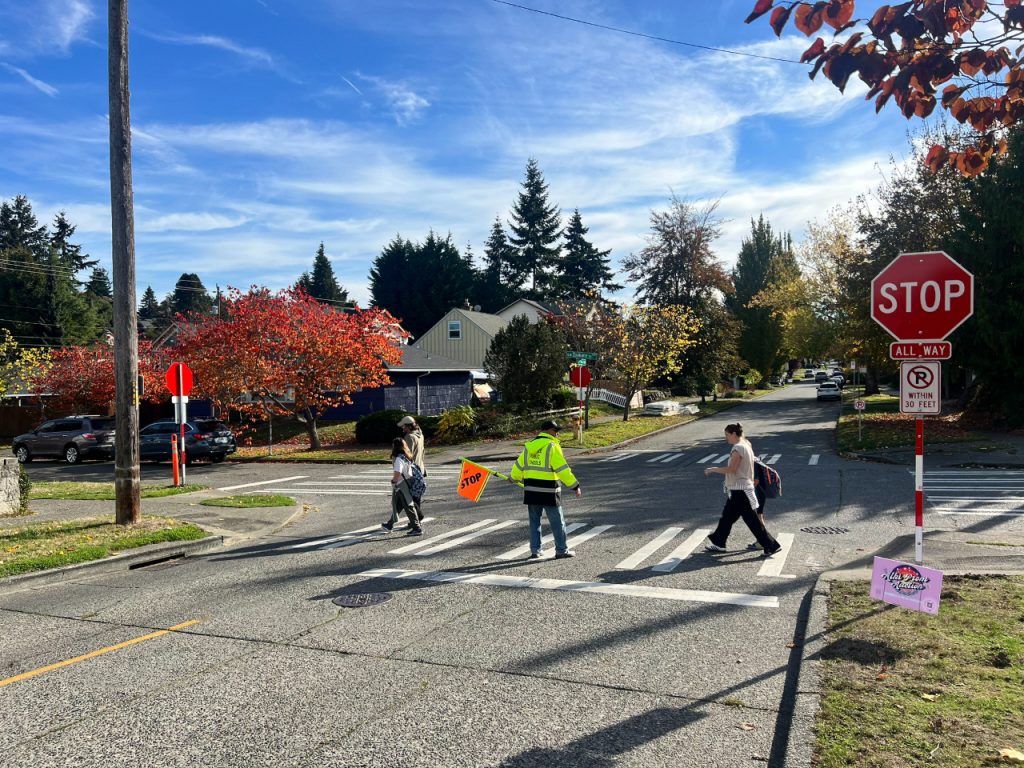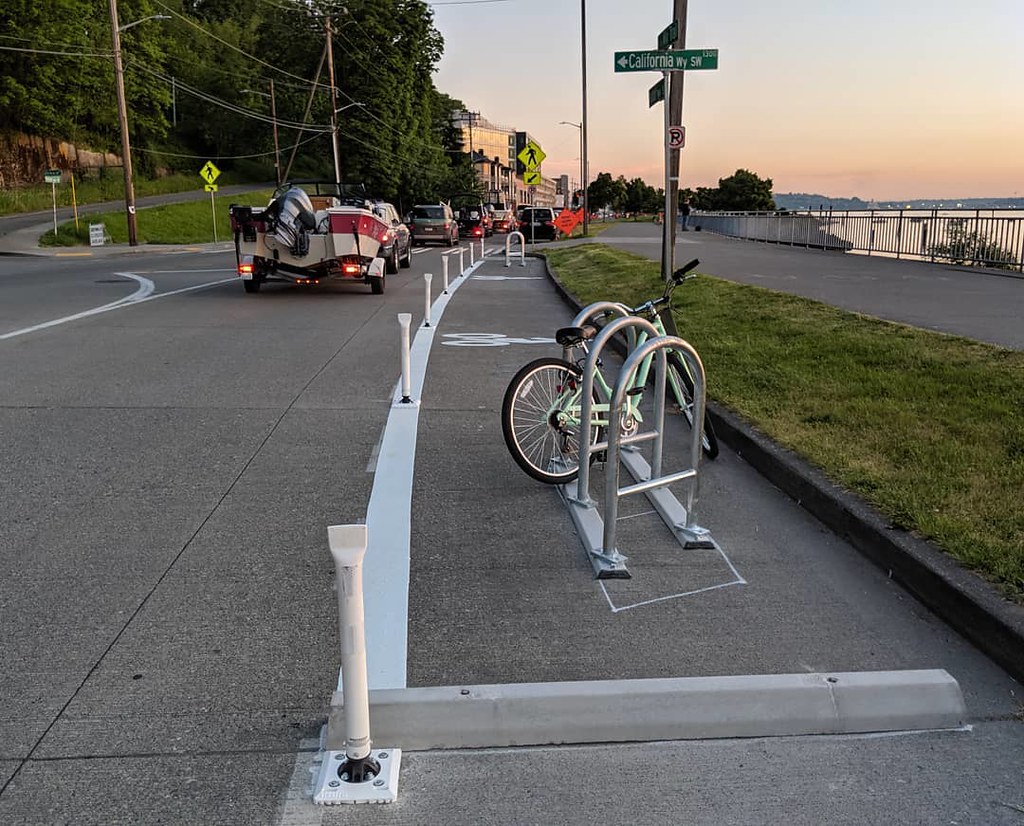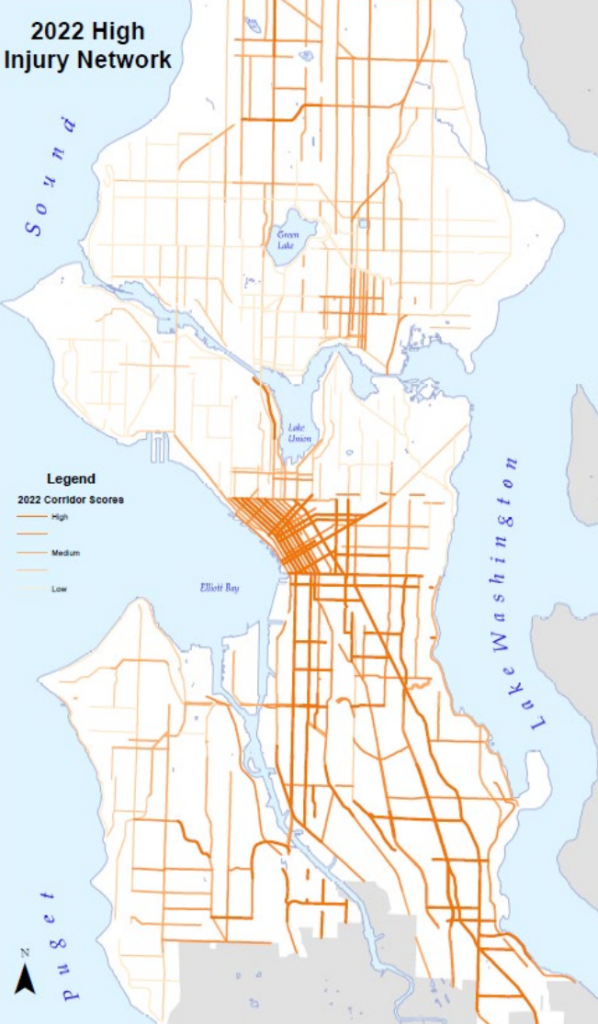
Changes moving forward at the Seattle City Council are set to bring an overhaul of the city’s policies around the deployment of automatic traffic cameras. Prompted by adjustments to underlying state law, the move is a first step toward the broader deployment of those cameras, a tool that has the potential to dramatically improve traffic safety across the city if implemented well.
For years, the Seattle Department of Transportation (SDOT) has been planning a significant expansion of the city’s school zone speed camera program, doubling the number of schools with cameras from 19 to 38. Funding for that expansion was allocated back in 2023, a move spearheaded by former Councilmember Alex Pedersen. After the roll out of those cameras took longer than initially expected, Rob Saka, Pedersen’s successor as chair of the Transportation Committee, briefly contemplated putting the brakes on those new cameras, but has since stepped dropped the issue.
Now the city council seems interested in even further expansion of the camera program, with Saka getting buy-in from his colleagues last fall for a $1.18 million budget allocation explicitly for cameras outside of school zones.
How the City will use that funding isn’t yet clear. The legislation being considered now will officially update the city’s municipal code to match state law, updating it to include new types of cameras — including ferry-queue-lane cameras and speed cameras on state highways — but more importantly, to include language around exactly what kind of equity analysis that the city needs to undertake before adding a new camera.
The city’s analysis will now be required to show a “demonstrated need for traffic cameras” based on a number of factors, including crash rates, vehicle speeds, rates of people walking and biking, and documentation of the “ineffectiveness or infeasibility of other mitigation measures.” SDOT is set to take these new requirements and use them as an opportunity to implement reforms to its automatic traffic camera program, City Traffic Engineer Venu Nemani told The Urbanist.

Seattle’s automatic traffic cameras have been broadly effective: schools with cameras have seen a 71% drop in collisions during the 1.5 hours per school day that cameras were active. School zone cameras for 45 minutes around school bell times twice daily. But the city doesn’t have structures in place to ensure that an individual camera is actually maximizing safety by reducing dangerous behaviors. While SDOT considers physical engineering treatments that would improve safety before adding cameras, analyzing a camera after it’s been in place for a while isn’t part of the system right now.
“One of the things that I’m really excited about with this program is how we are going to administer it in a more holistic way,” Nemani said. “Previously, we have deployed some cameras, and depending on the need and circumstances at the time, and we have not gone back enough to ascertain the impact of these cameras and the continued need of these cameras, but now the state law is very explicit in trying to say what kind of annual program evaluation we need.”
But there are signs of an impending clash around the future of the traffic camera program. As Transportation Committee chair, Saka’s vision around where cameras should be deployed doesn’t seem fully aligned with SDOT’s, with Saka clearly articulating a desire to use traffic cameras to crack down on a small percentage of drivers in the city engaged in illegal street racing. Earlier this year Saka advocated, unsuccessfully, for the state legislature to authorize Seattle to deploy cameras that issue tickets for noise violations, as another way to enforce street racing, but he also seems determined to use speed cameras for the same purpose.

“Used responsibly, automated traffic safety cameras can be a force multiplier, helping reduce lawlessness in our community,” Saka wrote in an email newsletter this month. “They will be especially impactful for the Alki – Harbor Avenue neighborhood as part of a broader suite of policy and design solutions to help reduce crime such as unlawful speed racing.”
This echoed comments Saka made earlier in the month where he suggested during a transportation committee meeting that the city council had already made the decision as to where new cameras should go.
“With respect to siting, the good news is that council already provided direction in various SLIs [statements of legislative intent] and budget investments, I mentioned them at the top. So: Alki/Harbor Avenue, Magnuson Park, Golden Gardens, and probably Belltown,” Saka said.
While the locations Saka mentioned may be “hot spots” for problematic speed racing, many of them don’t rank very high on the list of dangerous streets when it comes to overall collision rates, as evidenced by SDOT’s high-injury network. These are the streets in the city with the highest frequency of serious and fatal crashes, with downtown streets and high-speed corridors in SoDo and the Rainier Valley highly overrepresented.

Nemani made it clear that SDOT would be taking its own approach when it comes to identifying new camera locations, and explicitly seeking to integrate the high-injury network to make a big impact on speeding.
“We definitely want to take a very data-driven approach, completing the safety needs analysis, identifying and shortlisting potential locations, layering on our equity considerations, and then considering the various input that we received from individual community members, community organizations, and definitely from our council members,” Nemani said. “We will need to establish a safety need before taking other factors into consideration.”
But that doesn’t mean that Saka — or any other councilmember — won’t try and direct cameras to specific locations via a budget amendment, just as he did last fall when he directed the department to remove a median divider along Delridge Way SW that he had railed against as a private citizen.
The city council is also set to grapple with another question: where revenue from traffic cameras should be directed. Currently, the funds generated by different types of cameras all go into different accounts, but this legislation proposes to change that, directing all dollars collected by cameras into a new automatic traffic camera fund — with one exception. Namely, 80% of the funds from the city’s red light cameras go directly into the general fund, freeing them up to be spent on pretty much anything in the budget, and that isn’t set to change.
The proposed legislation keeps the uses of traffic camera dollars broad, only requiring that they go to pedestrian safety projects, “operational and maintenance investments,” projects that increase equitable access for people with disabilities, and traffic safety education campaigns. And nothing in the legislation requires the funds generated from cameras to pay for investments in that area of the city, much less in the specific vicinity of the camera.
At another committee meeting last week, Saka suggested that he wanted a clear nexus between the dollars generated and how they’re used, noting that without such a nexus, there’s a perception by the general public that traffic cameras are simply revenue generation tools that isn’t dispelled.
“There’s nothing better and more effective in my mind that I can think of, than making sure that as much of the revenue as possible is not invested in general fund, backstop for libraries — I love our libraries — or whatever it is, but these are specifically road safety improvements. That’s the intent. That’s the goal,” Saka said.
Whether the council will want to add additional guardrails around the funds generated by traffic cameras, and whether they’ll want to leave the special arrangement in place on red light cameras in place — at a time of intense pressure on the general fund — remains to be seen. Traffic safety advocates are pushing for the connections between cameras and the revenue they generate to be as direct as possible.
“That tight nexus between revenue and investment is really critical,” Seattle Neighborhood Greenways Executive Director Gordon Padelford told the Transportation Committee last week. “One of the reasons that the school traffic safety program has worked so well is that those revenues are being reinvested back into school safety — even better would be site-specific plan for where those cameras are located.”
All told, these policy questions are set to be hashed out in the weeks ahead even as the timeline for new types of cameras being added onto the city’s streets remains much further off.
Ryan Packer has been writing for The Urbanist since 2015, and currently reports full-time as Contributing Editor. Their beats are transportation, land use, public space, traffic safety, and obscure community meetings. Packer has also reported for other regional outlets including Capitol Hill Seattle, BikePortland, Seattle Met, and PubliCola. They live in the Capitol Hill neighborhood of Seattle.


